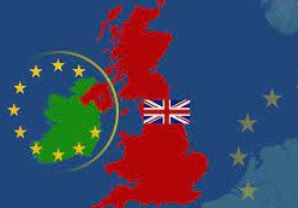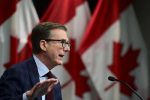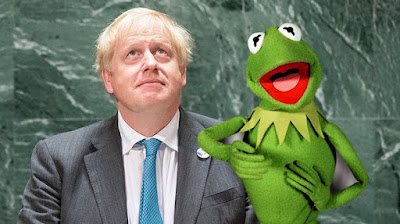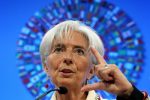 No one can feign surprise that the Bank of England kept policy steady. Nor was the 9-0 vote truly surprising, though there had been some speculation of a couple of dovish dissents. Nevertheless, there are two important takeaways for investors.
No one can feign surprise that the Bank of England kept policy steady. Nor was the 9-0 vote truly surprising, though there had been some speculation of a couple of dovish dissents. Nevertheless, there are two important takeaways for investors.First, the BOE recognized what many in the market have already accepted; namely that the economy has lost some momentum. Growth for Q1 is estimated at 0.4%, which represents a some moderation. Over the past four quarters, the UK has averaged 0.5% growth, and over the past eight quarters, quarterly growth has averaged 0.6%.
Second, and related, the BOE suggests that the uncertainty about the referendum may already be taking an economic toll. Whether the minutes reflect the actual discussion or is used as a communication device, the risk of Brexit is of greater concern. Surely this is because of the potential economic risks posed by a Brexit decision. Earlier this week, the IMF also noted the risk of negative fallout from a decision to leave the EU.
The Bank of England had previously indicated it would provide extra liquidity into the run-up to the referendum at the end of June. In terms of rates, though, the BOE is highly unlikely to take any action before the referendum. Interestingly, like the Fed’s Yellen, the BOE seems to be greeting the latest uptick in inflation with suspicion. As we noted with the release of the CPI figures, the effect of Easter may have played a role, which means it could be unwound in the April report.
Surveys suggest economists mostly anticipate the first BOE hike in Q1 2017. The markets don’t appear to be pricing in the first hike until late-2017. Our view is conditional on the outcome of the referendum. Some polls suggest the outcome has tightened while the events market PredictIt shows a 38% chance of Brexit, which is largely flat in recent weeks.
We have been warning for the past month or so that the risks are increasing. For this kind of events, we think of the risk as a function of the likelihood multiplied by the impact. We see the likelihood have crept up closer to a 50/50 proposition, based on the largely fear-based campaign of the “remain” camp, the political faux pas of the leaders of the leaders of the remain camp (e.g. Osborne’s budget and Cameron’s handling of the Panama Papers), and other events (attack on Brussels and Europe’s immigration challenge).
Sterling has been in a clearly identifiable range since the beginning of March between $1.40 and $1.45. |Three month implied volatility remains elevated near 16%, which is the highest since 2010. That suggests the demand to buy options rather than sell. The puts are going for a near-record premium over calls, suggesting that the options being bought are puts. Implied volatility has softened a little today, and the premium for puts has eased slightly today. We would not read much into this price action.
We see market participants being opportunistic in adjusting sterling exposures. The first wave of position adjustment seems over as the event moved within the three-month time horizon, a sweet spot for many investors. Sellers of sterling seemed to have stepped back, perhaps discouraged when sterling approached $1.40. However, sellers reemerged earlier this week when sterling recovered to $1.4360. Again today, sellers retreated when sterling dipped below $1.41.
Tags: Brexit,newslettersent

































